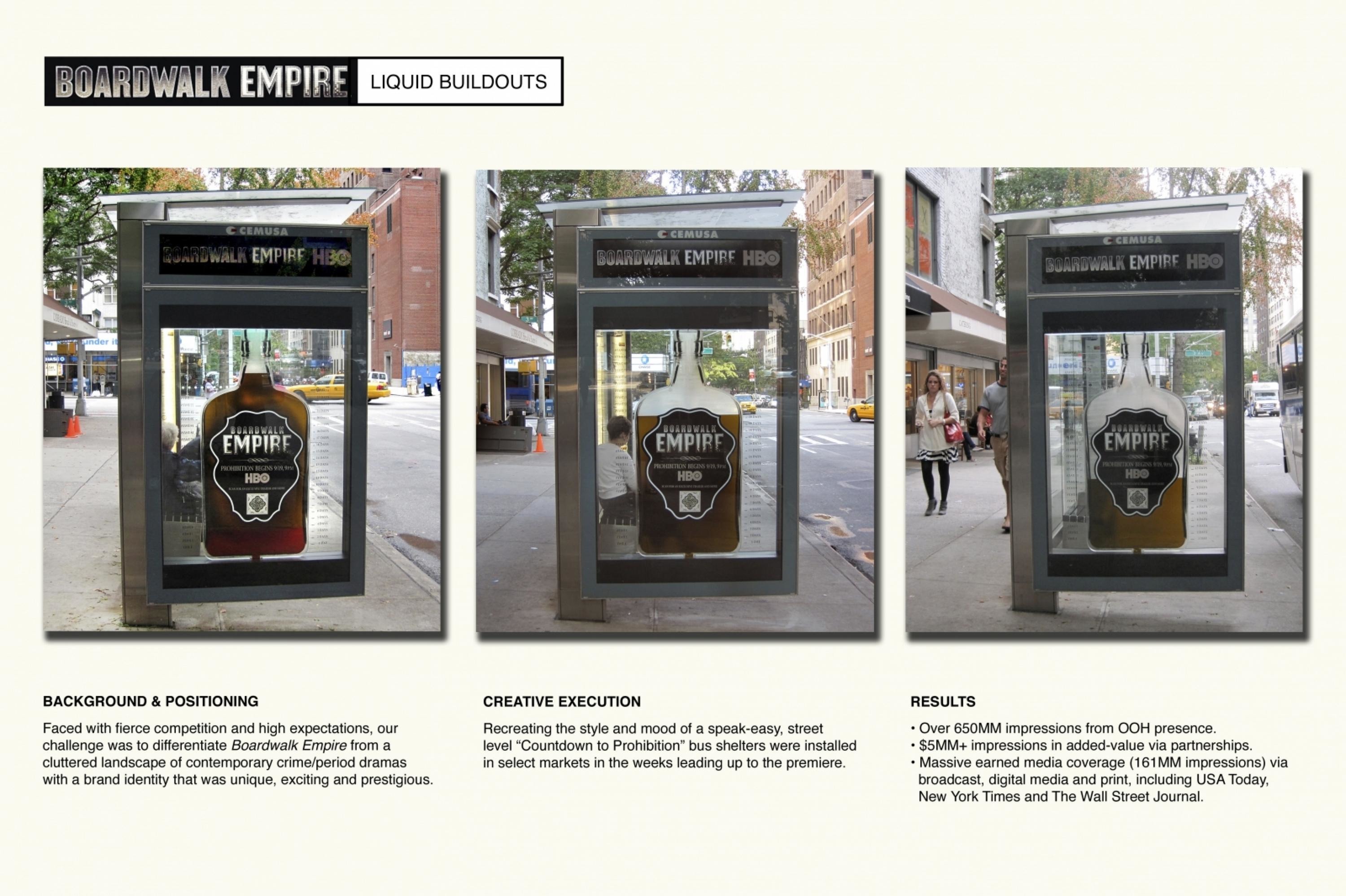Industry Craft > Integrated
WESTWORLD SEASON 1
HBO, New York / HBO / 2017

Overview
Credits
Overview
CampaignDescription
The ensuing campaign sold the series by communicating the high-end allure of the park itself via provocative in-world materials that took viewers into the series’ layered world and lurking darkness via print, web, outdoor, social, virtual reality, a chatbot, and more. HBO brought the park to life, creating a subverted travel experience that treated fans as if they were guests planning trips the park itself. HBO also stayed true to Westworld’s spirit of technological innovation by using industry-first advances to challenge the typical user experience: a virtual reality experience, a digital-only A.I. chatbot character and an alternate-reality game.
Execution
HBO marketed Westworld using a multi-layered, event-level campaign. Tactics included outdoor media throughout NY and LA; print ads in publications such as Vanity Fair, WIRED and Entertainment Weekly; national and local television spots; 1,200 in-cinema nationwide spots; high-impact digital media including site takeovers and homepage roadblocks across various sports, gaming, entertainment and industry platforms. The in-world campaign broke down traditional boundaries with interactive storytelling. Pre-premiere, HBO targeted those who could afford a ticket to Westworld—the 1 percent—by using custom, high-impact creative across sites inviting users to “begin planning their trip” at DiscoverWestworld.com. At series launch, concierge bot Aeden sparked conversation as part of an ever-evolving alternate-reality game, building and engaging a ravenous community. After the season finale aired, on-air messaging, cast involvement and social media furthered a stunt that extended the finale plot for Westworld’s fans. The evolution continued as Aeden sprang to life on Google Home.
Outcome
Westworld became HBO’s most successful series debut ever, averaging 12 million viewers per episode—an achievement aided by the dovetailing mainstream and in-story campaigns built around the show. Beyond ratings, Westworld’s influence was felt in the digital universe with 1.4 million visits to DiscoverWestworld.com, more than 1 million fan interactions with Aeden, and more Twitter buzz than any HBO series premiere on record. The media campaign served over 211 million impressions; key promos and trailers garnered 56 million views. Beyond just metrics, Westworld established itself as a driver of cultural zeitgeist, became a television phenomenon and extended the tradition of HBO’s landmark drama series.
Relevancy
HBO established Westworld as the TV event of the fall, creating multi-layered mainstream and in-story campaigns that invited audiences into the series’ distinct world, a luxury destination where human and artificial intelligence intertwine. The messaging was strategically flighted across targeted, high-profile media including outdoor, print, cinema, and television, while simultaneously disseminated through an ever-evolving digital ecosystem including social media, an in-world travel website, an A.I. chatbot, a virtual reality experience and an alternate-reality game—all of which transformed casual viewers into superfans. The integrated approach made Westworld the most successful freshman series in HBO history.
Strategy
HBO developed two unique marketing approaches: A mainstream campaign targeted broad entertainment fans, while an in-world campaign catered to sci-fi and tech enthusiasts. For the latter group, HBO used artificial intelligence as a throughline of the campaign, becoming the first entertainment brand to activate at TechCrunch Disrupt with a virtual reality experience. Next, tech enthusiasts were greeted by a first-of-its-kind concierge chatbot named Aeden. HBO found synergy between the two campaign streams with a print ad in the New York Times Magazine “Voyages Issue.” Aeden invited users to DiscoverWestworld.com, which was the hub of an alternate-reality game. In addition to offering fans easter eggs and clues, the ARG broke key marketing assets in innovative ways, like dropping the show’s trailer via an in-story email from the park’s corporate owner Delos Incorporated. Simultaneously, targeted creative spots pushed the show to female and multicultural audiences.
Synopsis
In 2015, HBO greenlight 10 episodes of Westworld, a drama from Jonathan Nolan, Lisa Joy and JJ Abrams loosely based on the 1973 Michael Crichton film. The series chronicled a premium travel destination offering visitors a no-holds-barred experience of the Old West at the dawn of artificial intelligence, complete with human-like robots. HBO was tasked with selling the show to both potential advocates—especially sci-fi and tech fans—while also launching a large-scale, 360 campaign to generate awareness and conversation among a mass audience. The use of cutting-edge technology was essential. The objective was to build a campaign around attention-grabbing, intriguing and highly-shareable creative that would transcend marketing and bring the world of the show directly to fans.
More Entries from Integrated in Industry Craft
24 items
More Entries from HBO
24 items

